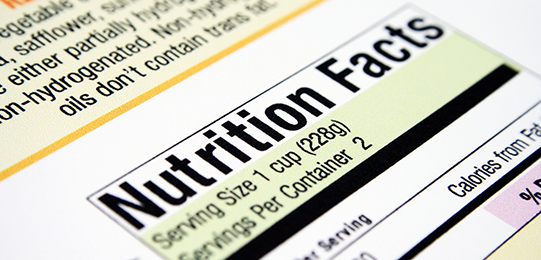
The Importance of Reading Labels
When I was pregnant with my second baby, I had an obsession with white cheddar cheese curls. I would eat them ALL the time. If I was in the grocery store and I walked down the snack aisle, I would buy them. And then proceed to eat them in the car on the way home. On super glorious days, I would find them on sale 2/$4. I’d have to buy two, no question. Then, I would eat one bag that day, and the second bag within a day or two. It was disgusting. Disgustingly awesome. But there was one disgusting thing I was careful NOT to consume – the information on the nutrition facts label.
Once my daughter’s allergies were diagnosed, the prescription was strict avoidance of all known allergens. That meant I was now to read food labels on everything I might possibly feed her. Carefully. I learned how to spot a word that means milk – like casein or whey. I learned that if I see a little asterisk (*) at the bottom of an ingredient list that mentioned adding a trivial amount of fat, it was most likely attached to a dairy product. I learned that “meringue powder” is just a fancy way of saying “dried egg whites.”
Once I started reading labels, things started changing for me. I started questioning everything. I had to, for my daughter’s sake. What the heck is “soy lecithin” or “calcium stearoyl-2-lactylate” anyway? If it has the word calcium, or sounds like lactose, does that mean it’s milk? I also started questioning what this stuff really is, and if I wanted to put it in my body or my kids’ bodies. After doing minimal research, it turns out a lot of the questionable ingredients on labels are FDA-approved additives just to make foods last longer – preservatives.
So, how much of this stuff is too much? I ask because I really have no idea. I want to feed my family the healthiest choices, make as much as I can homemade, but, realistically, there is only so much I can do.
One thing I can easily do: cut out all things that are obviously JUNK. “Fake foods,” as I started calling them. Like my white cheddar cheese curls. The last ingredient, “artificial flavor,” is so generic that it’s mind-boggling. (I guess they couldn’t just say “chemicals!”) Even my obsession with Reese’s Peanut Butter cups has lessened since I found out it included two ingredients that were just initials: PGPR and TBHQ. There are plenty of articles out there that will tell you that these things are seriously bad!
To use a cliché’ phrase, being forced to read food labels turned out to be a blessing in disguise. If I see just a few ingredients, and I can pronounce them, I’m much more likely to eat it, or serve it to my kids.
Do you read labels? Wonder what some of those ‘mystery’ ingredients REALLY are?
Carrie is a mom to three kids, including a daughter who is allergic to milk, eggs and peanuts. She has a passion for sharing information about food allergies on her blog, Chockababy.